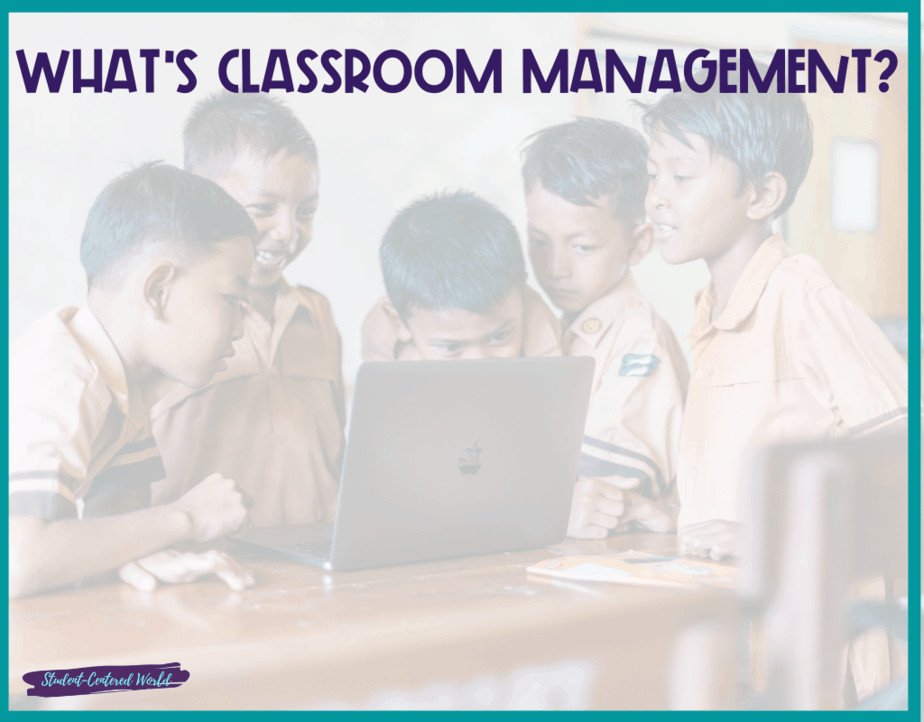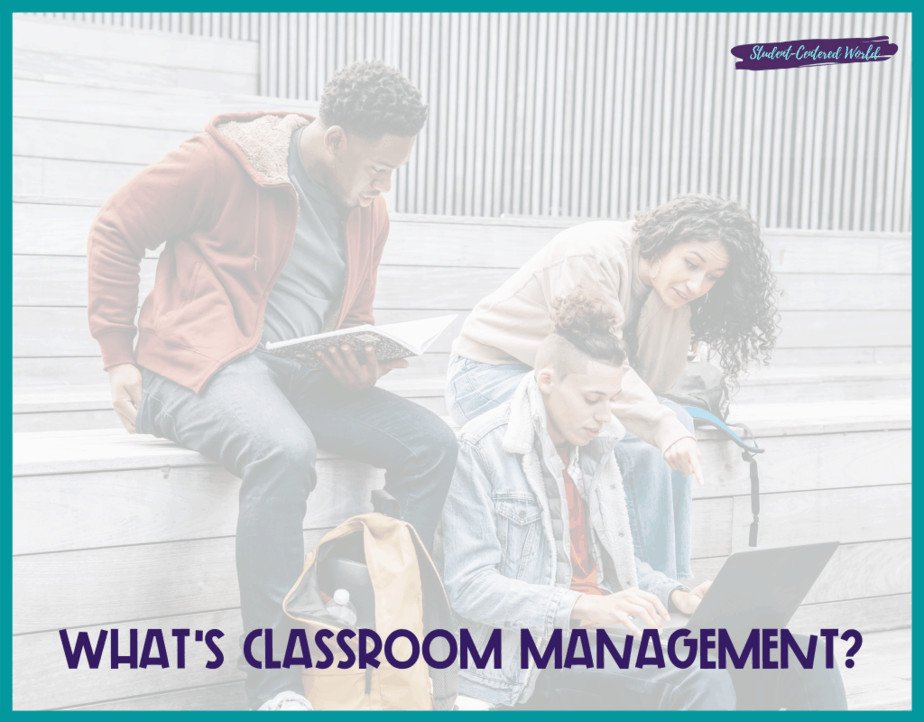What’s Classroom Management? 3 Best Points for a Happy Class
We are constantly hearing about “classroom management”, but definitions of what that means seem to vary greatly. While some think it’s about behavior, others think it’s about culture, and some others even consider it academic. What’s classroom management? It’s a delicate balance between all of these factors.
Classroom management is what we need to make the learning environment what it should be. It helps you create a fun, safe, and positive classroom where students can benefit from their time as much as possible. This means being there for them, but also knowing when and how to push them just enough to make sure they are improving themselves.
By asking, “What’s classroom management”, you’re also wondering “What’s learning management?”. For a teacher, it is important to learn how to manage the classroom. It is what will help you maintain discipline in your school and keep order in class. You have to also know what works best for all of your students. To do this you have to understand what motivates them outside of class and what works best for them.
The most important answer to “What’s classroom management” is that it helps allow students to feel safe and respected. They should not only have a place where they can learn but also somewhere they can ask questions and just be themselves. It’s what makes the learning experience truly what it is meant to be.
What’s classroom management? It’s understanding what motivates students and what works best for them. Know what keeps the classroom running smoothly and what helps keep everyone focused on what’s most important – learning.
What makes classroom management effective?
Effective classroom management refers to the strategies and techniques used by teachers to maintain control and create a positive learning environment within their classrooms. It encompasses the management of student behavior, both positive and negative, and aims to foster student success and academic achievement. Effective teachers understand the importance of classroom management as it directly influences the learning process and the overall classroom environment.
In a well-managed classroom, teachers establish clear expectations and classroom rules at the beginning of the school year, setting the tone for a positive learning environment. They implement daily routines and organizational skills that cater to the needs of individual students while considering grade levels and a wide variety of skills.
Classroom management systems may include different strategies, such as positive reinforcement, group work, and positive relationships, which enable teachers to address disruptive behavior and reduce discipline problems. A strong classroom culture and the development of positive relationships with students are also key components of effective classroom management, allowing teachers to have complete control over their classrooms and providing the right environment for student learning.
New teachers, especially those in their first year of teaching, often face one of the biggest challenges in their career—proper classroom management. It involves adopting a teaching style that aligns with their teaching philosophy and subject areas, while also considering the emotional and social learning needs of students. Over recent years, there has been a shift away from the authoritarian classroom management style towards a more collaborative approach that encourages student engagement and participation.
Teachers can leverage classroom management software and professional development opportunities to enhance their classroom management skills and, in turn, improve student achievement. Ultimately, effective classroom management is the most important aspect of a successful classroom, as it sets the stage for positive student behavior and a way of learning that promotes academic excellence.
WAYS TO CREATE A GREAT LEARNING ENVIRONMENT
- Have high expectations. It’s what you need to get the best out of students, and what they need to push themselves. It’s what they want from you so SHOW them what you’ve got! Don’t be afraid to give feedback, negative or positive, and what each means for what they’re doing.
- Be consistent in what you do. It’s what is needed to create a bond with students that will help them trust what you have set in place for them.
- Don’t be afraid to show affection and warmth towards your students. Everyone needs it sometimes, especially when learning something new.
Learn what makes your students what they are and what helps them succeed. Use what you know to create a classroom that is what your school needs and what is appropriate for what’s happening in the subject.
What’s classroom management? It’s creating an environment where students feel safe, respected, and valued so that learning can happen. It’s what helps them push themselves and what you need to get the best out of them. It helps you stand by your students but also pushes them just enough so they can learn how to help themselves. To answer what classroom management is, you have to ask what works best for your students…and that answer can change from year to year (and that’s okay!)

What’s Best for Your Students
What works best for your students is kind of a vague statement. What does this mean? You need to find student intent, learn what excites them, and find the balance between discipline and instruction.
Student intent is what they are looking for when they’re in your classroom. What do they want to learn, what excites them? This doesn’t mean what’s fun but what gets them thinking about what they can build on. It’s what helps you get a better understanding of what’s classroom management or learning management from a student’s perspective.
Learn what excites students but also what they turn their noses up at. Find a balance between what motivates them and what keeps them on track to learn what’s most important in your subject or what they want to learn from you.
Discipline is what helps keep a classroom running smoothly, and instruction is what brings the classroom to what you want it to be – learning management. Discipline is what helps keep your students in line and what keeps the classroom working well for what’s going on around them. Instruction is what gives them a purpose for being there, what they learn from you, and what makes them push themselves to do better next time
Discipline is what keeps your class running. Simplify what you have to do and teach, link what students learn with what they already know (personalization), and find out what excites them while sticking to what works best for your students.
Instruction is what pushes a classroom forward. If learning management isn’t as exciting as the first day of school, what makes it interesting so students come back for more? Is what you’re teaching what excites them or is what they say what excites them what’s important to learn and what makes a difference in your subject?
You can’t control everything that happens in a classroom, but if there are parts of the day or moments when things aren’t going as well as they should, find what works and what doesn’t work.
Take a look at what works for your students without taking them out of context, and build on what excites them – what motivates them and brings about learning management in your class, what they think about when they’re not with you, and what brings a balance to what you do at school.

CLASSROOM MANAGEMENT AS A TEACHER
What’s classroom management? It’s what works for what the students want most in what you’re teaching. It’s what helps them push themselves and what keeps them engaged when things get tough.
It’s finding what excites your students, what they want most from you that will make them learn more effectively, and what they need to push themselves. It’s what helps create an environment where learning happens on all levels and what makes them what they are: a student who wants to learn what you’re teaching.
Students aren’t one-size-fits-all though so what works for one doesn’t mean it will work for another. What’s classroom management? It’s what works for what your students need both individually and as a whole.
Trying to find that balance can seem like an infinitely difficult task. However, here are some questions to ask to keep yourself on the right path:
- What are some strategies to help keep students focused during class time?
- How can you as a teacher get a better understanding of what excites your students so that they push themselves to learn what you’re teaching?
- What changes can you make to what you’re doing so that what’s classroom management focuses more on what your students want?
These three questions will help you get what your students want and need in a classroom while also helping them push themselves to learn what they’re doing.
It doesn’t matter what you’re teaching, what matters is what excites your students and what they want from it. It’s what gets them thinking about what you’re doing and eager to learn more next time. It is what helps create a safe environment where what you’re teaching can work best. It’s what helps you be a guide but also gives them something to push against as they strive to do better.

THE ESSENCE OF CLASSROOM MANAGEMENT
One of the big reasons that teachers burn out or quit is because they don’t feel in control. (If you’re Googling “What’s classroom management” right now, you may be one of them!). If you’ve ever been around a true classroom management guru, you can sense the calm and quiet energy that surrounds them. No matter what state the kids are in, no matter how noisy it gets, the teacher (usually) seems to be in control.
There are plenty of reasons for this, but one is because they have a firm grasp on the concept that if you don’t control your classroom, someone else will! If you let the kids run wild and take over, chances are pretty good that they’ll do it as soon as you step out of the room. In order to keep that from happening, you have to develop a classroom management plan.
The foundation of knowing what classroom management is is the discipline strategy. A discipline strategy is something that you do daily with your students which:
- Helps them learn self-control. This should be tied directly into their individual behavior plans (if they have one) or into the rules of your classroom. This also lays a foundation for them to learn self-control in other areas of their life like sports, social interactions, and work.
- Keeps kids on task. A strategy that keeps students focused is going to do you a world of good when it comes to managing behavior problems and completing lessons.
- Lets you regain control when necessary. I’m sure you’ve seen one of those teachers who rarely needs to raise his or her voice to get the kids in order. A discipline strategy should allow you to either calm the class down (to prevent escalation) or restore order quickly after a disruption.
When developing your discipline strategy, think about the following:
- What is the behavior you want to see from your students? (focus, respect, etc.)
- How can you reward that desired behavior? (stars on a chart, verbal praise, etc.)
- What will you do to correct the undesired behavior? (a warning followed by a consequence if the student doesn’t correct their own behavior).
You’ll want to think about what you want to happen if the class is making too much noise, kids aren’t paying attention, or are having a hard time getting started on some task. Think of something that is quick and easy for you to do at the time in response that will get them back on track. The best discipline techniques are the ones that you have time to use.
After you’ve thought through what you want your kids to do and how you’ll respond when they don’t, consider how this can be accomplished. A strategy is made out of procedures that are not only explained and taught over time but are also ingrained into the daily classroom climate so there is no confusion about expectations. When this is accomplished, engagement goes up, behavior is on point, and you too will be one of those teachers who appear to be a classroom management guru and when someone else asks what’s classroom management, you’ll have the answer.
Stop Driving the Teacher Struggle Bus
Are you struggling with student engagement, apathy, or keeping your class on track?
💫💫 There’s hope! 💫💫
Join my free teacher workshop “Choosing Choice” and in just 60 minutes, you’ll craft a practical plan to revitalize your teaching. Discover the magic of student choice in boosting engagement, gain quick implementation ideas, and explore strategies for year-long success.
Unlike overwhelming workshops, my approach guides you in real-time, providing more classroom options, reducing stress, and giving you more personal time.
Plus, you’ll earn a 1-hour professional development certificate and have 7 days of access.
Don’t miss this chance to transform your teaching; click below to secure your spot now!
This article was originally published on August 17, 2021






